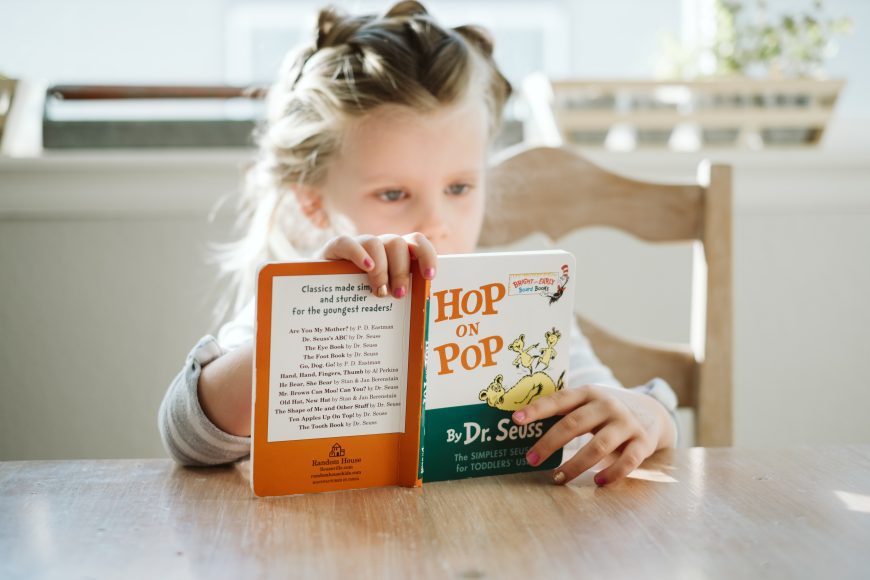I’ve always loved reading to my daughters. It’s my absolute favorite part of our bedtime routine, second only to the sleep meditation when I inevitably fall asleep, too.

Then came reading with my child. Kindergarten wasn’t so bad. My daughter’s teacher occasionally sent home books they’d practiced that day in school. Then came first grade with its nightly reading homework and goal of 20 minutes of focused reading. As before, the books from school were no problem, but we struggled to read unfamiliar texts together even when the reading level was appropriate. What was I doing wrong, I wondered? I never knew how often to help or correct, and asking her to “sound it out” rarely worked. I started to feel defeated, and my daughter, resistant.
Because teachers are absolute superheroes, hers came to the rescue with a link to a Youtube video from Cult of Pedagogy called Nightly Reading Homework Best Practices for Parents. It was incredibly helpful. As it turns out, I wasn’t doing everything wrong, but there were three tips that really helped me partner with my daughter in a productive way.
Don’t “tell” the words.
When to offer help was a big question mark for me. My daughter’s tendency is to look up at me immediately when she arrives at an unfamiliar word. Usually, I would just give her the answer and move on. However, the video suggests sitting quietly to allow the child ample time to “decode” the word, which is a valuable part of the learning process. Before I started using this one, I did let my daughter know I was changing my strategy, which smoothed the transition.
Move beyond “sound it out.”
This tip was the one I needed most. If I’m not to tell her a word straight away, is there anything I can do to help her figure it out? The video provides several decoding strategies. Two of them have been game-changers for us. First, I learned to compare a confusing word to one she already knows. For example, “park” is a sight word from kindergarten, so if she’s stuck on “dark,” I might say, “The end of that word sounds like park but with a d sound.” For longer words, especially where she knows one part of the word, I now cover up the unfamiliar part so she can focus on the piece she knows. This happens a lot with -ing or -ed endings. If she knows “sing,” she can read that part before adding on the -ing ending for “singing.”
Allow some mistakes to go uncorrected.
Starting out, I corrected every single misread word as we went. How else would she learn to read correctly? But, not only did my constant interruptions frustrate her, they also affected her fluency and comprehension. According to the video, not every tiny error needs to be called out, especially when she’s been concentrating on other difficult words in the sentence. For example, if she reads “the” when it should have been “a,” interrupting her flow isn’t necessary.

There were more best practices in the video than I can cover here. If you and your child are struggling to read together, check out the whole video for even more useful suggestions. My favorite part was the short, detailed examples for each tip that showed me exactly how to put them into practice with my daughter. Since I’ve implemented them, nightly reading has become so much more relaxing for both of us. She’s even asked to read beyond what her teacher sends home without my prompting her. *Huge sigh of relief!*










